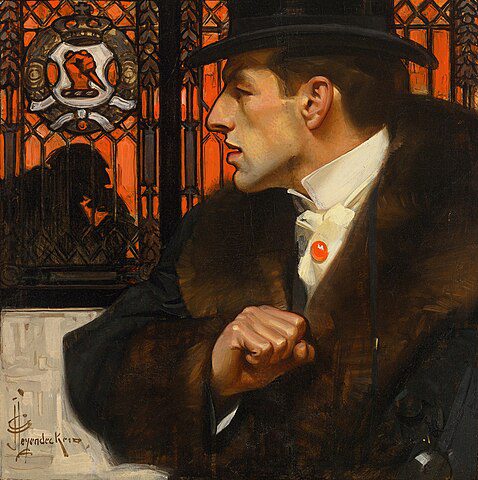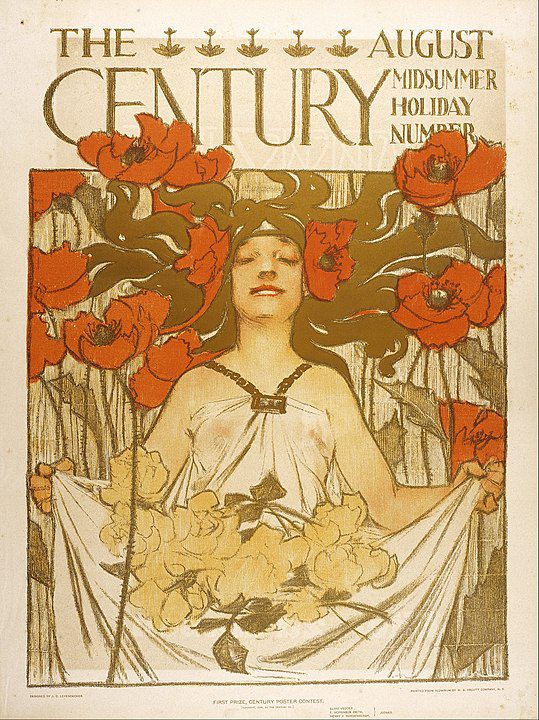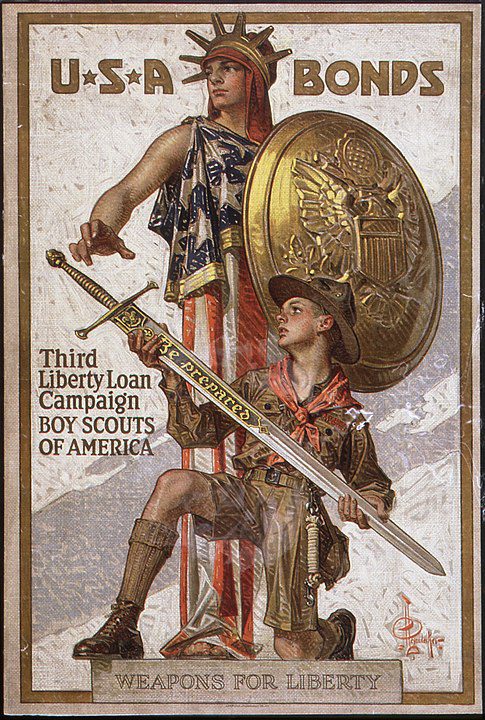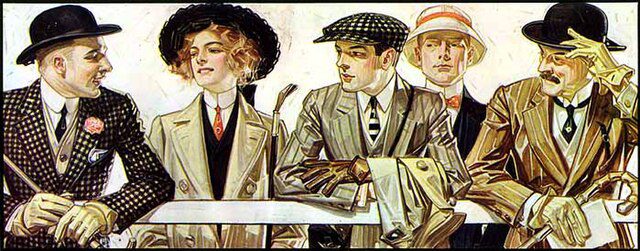
Joseph Christian Leyendecker (1874-1951) was a preeminent American illustrator whose work defined the visual culture of the early 20th century. Born on March 23, 1874, in Montabaur, Germany, Leyendecker immigrated with his family to Chicago, Illinois, in 1882. His early interest in art led him to study at the Chicago Art Institute before moving to Paris to attend the Académie Julian, a pivotal experience that honed his distinctive style.
Leyendecker’s career took off upon his return to America, where he quickly established himself as a leading figure in the world of illustration. His work was characterized by its exquisite detail, vibrant color palette, and an almost sculptural treatment of form. Leyendecker’s ability to capture the nuances of fashion, character, and emotion made his illustrations deeply compelling and widely popular.

Perhaps best known for his covers for The Saturday Evening Post, Leyendecker produced more than 400 magazine covers over his career, influencing the look and feel of American periodicals. His first Post cover appeared in 1899, marking the beginning of a long and fruitful association with the magazine. Leyendecker’s covers, often featuring the iconic Arrow Collar Man, whom he created, helped to define the ideal of American masculinity in the early 20th century. This character was not only a fashion icon but also a symbol of the clean, confident, and modern American man, contributing significantly to the success of the Arrow Shirt Company.
Shaping American Culture
Beyond his commercial success, Leyendecker was instrumental in shaping the visual landscape of American holidays and traditions. His interpretations of New Year’s babies, Santa Claus, and Thanksgiving scenes became part of the American collective consciousness, setting a standard for holiday imagery that is still recognized today.

Leyendecker’s influence extended beyond his own work to the artists he mentored and inspired, most notably his brother Frank X. Leyendecker and Norman Rockwell. Rockwell, in particular, considered Leyendecker his primary mentor and spoke highly of his influence. Despite this, Leyendecker’s professional relationship with The Saturday Evening Post ended in the late 1930s, and Norman Rockwell took over as the magazine’s star illustrator.
Despite his commercial success, Leyendecker led a private life. He shared a home with his brother Frank and Charles Beach, the model for the Arrow Collar Man and Leyendecker’s lifelong companion. The nature of their relationship was kept private, reflective of the social constraints of the time.
Lasting Impact
By the time of his death on July 25, 1951, in New Rochelle, New York, Leyendecker’s popularity had waned, overshadowed by the rising stars of mid-20th-century illustration. However, the lasting impact of his work cannot be overstated. Leyendecker’s illustrations continue to be celebrated for their beauty, technical mastery, and profound influence on American art and culture.

In conclusion, Joseph Christian Leyendecker’s biography tells the story of an artist who was a pioneer in the field of illustration, shaping the visual narrative of America in the early 20th century. His legacy endures through his iconic images, which continue to captivate and inspire, reflecting the elegance, optimism, and spirit of his time. Leyendecker’s work remains a testament to his extraordinary talent and his unique ability to capture the essence of an era.




